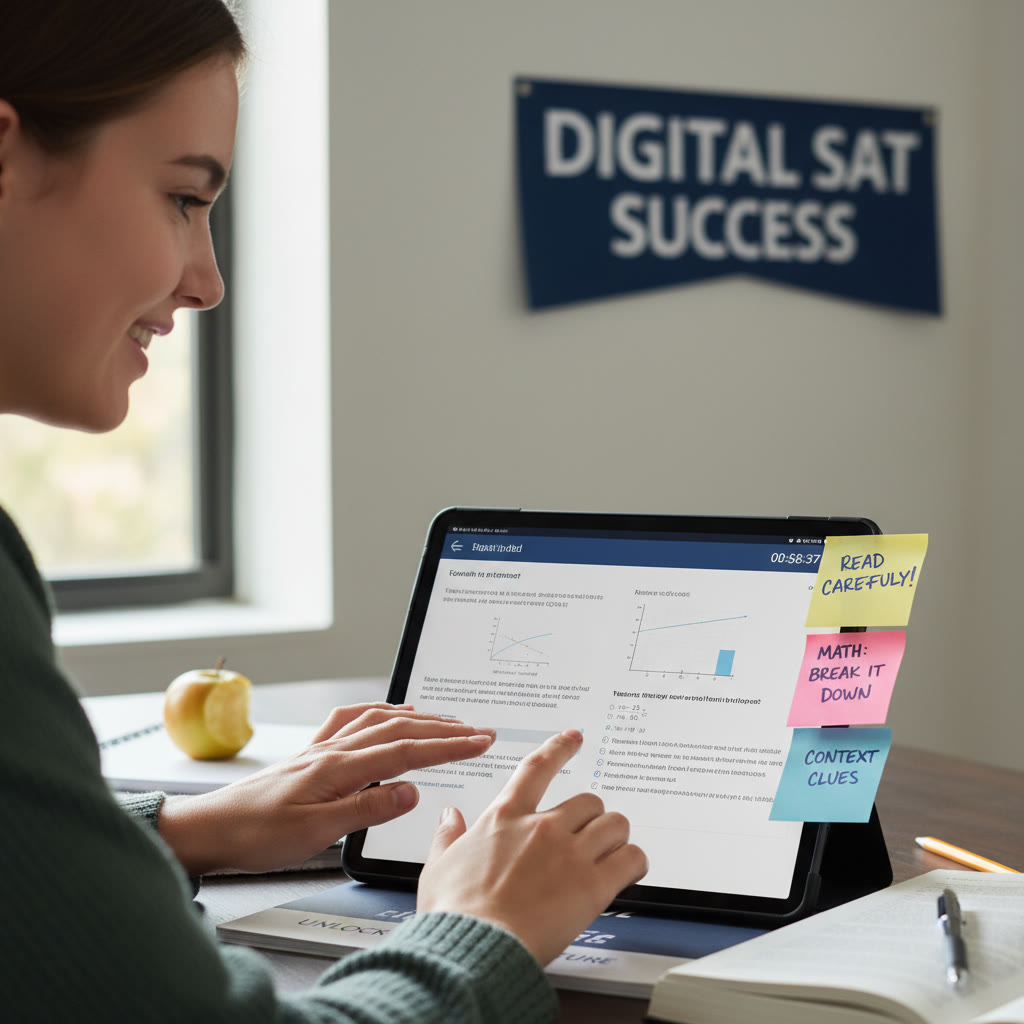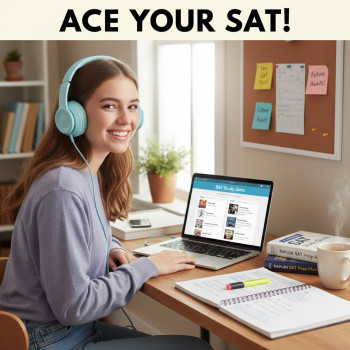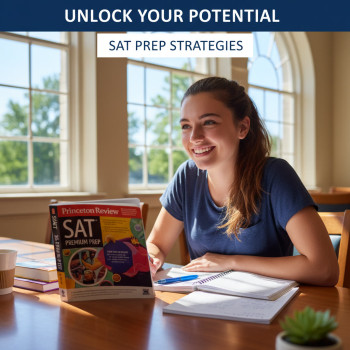Do I need to submit an SAT score to apply to UC Santa Barbara?
Short answer: not necessarily. As the landscape of college admissions has shifted over recent years, many University of California campuses — including UC Santa Barbara — have moved to test-optional policies for most applicants. That means you are typically not required to submit SAT or ACT scores as part of your application. But “not required” doesn’t always mean “not useful.” In this article I’ll walk you through what that policy means in practice, when submitting Digital SAT scores can help, how to interpret score ranges, and smart, practical strategies for students and families who want to keep every option open.

Understanding the test-optional landscape — what it really means
Test-optional means applicants can choose whether to submit standardized test scores. Admissions readers will evaluate your application without an SAT score if you don’t submit one. When you do share scores, colleges may use them to clarify academic preparation, place students in courses, or award merit-based scholarships — depending on the school’s internal policies.
For competitive public universities like UC Santa Barbara, admissions decisions are holistic. Your transcript, the rigor of your coursework (AP/IB/college courses), GPA, personal insight essays, extracurriculars, and context (school and life circumstances) all carry heavy weight. An SAT score is an additional data point that can help if it strengthens your profile — but it’s rarely the only or decisive factor.
When submitting an SAT score can help
- You’ve taken the Digital SAT and scored significantly above the middle range of admitted students — a strong score can underscore academic readiness.
- Your high school has grade inflation concerns or your GPA doesn’t reflect your true strengths — good test scores can provide a standardized measure.
- You’re applying to a very selective program or major (e.g., engineering, physics, or computer science) where quantitative demonstration helps.
- You’re seeking scholarship consideration at schools that still use test scores for certain awards.
What UC Santa Barbara admissions typically look for
While each applicant is evaluated on the whole application, UCSB (like other UC campuses) tends to place major emphasis on the following areas:
- Academic record & rigor: Challenging coursework in high school and grades that reflect mastery of college-preparatory subjects.
- Personal insight essays: Clear, authentic writing that reveals values, resilience, and potential contributions to the campus community.
- Extracurriculars & leadership: Depth matters more than breadth — sustained commitment, demonstrated impact, and leadership count.
- Context: Socioeconomic background, family responsibilities, and available school resources are considered.
- Standardized test scores (optional): When submitted, they supplement and clarify other academic signals.
How admissions readers interpret an optional SAT score
Admissions officers don’t approach optional scores with a single formula. Instead, they ask: does this score add information or clarity? A score that aligns well with an applicant’s transcript and essays reinforces the academic narrative. A score that contradicts a strong transcript might raise questions, but contextual notes (such as learning differences or limited testing opportunities) can be explained in the application.
What is a competitive Digital SAT score for UCSB?
There’s no fixed “magic number” because UCSB doesn’t publish an absolute cutoff and the admitted applicant pool fluctuates year to year. However, you can use a few practical benchmarks to guide your target score:
- If you’re aiming to be comfortably competitive, target a score at or above the middle-to-upper range of scores for selective UCs — roughly the upper third of test-taker distributions.
- For STEM majors, emphasize the math/quantitative portion; for humanities and social sciences, balance both sections.
- Use your practice exam percentiles to compare where you fall nationally — a 75th percentile or higher is often regarded as strong for selective public universities.
Remember: those benchmarks are directional. Your complete profile (courses, essays, activities) often matters more than a single test number.
Practical Digital SAT planning for UCSB applicants
If you choose to take the Digital SAT, plan intentionally. The digital format is shorter and adaptive in sections, so preparation strategies differ slightly from the paper SAT.
Timeline and test-taking strategy
- Start practice at least 3–6 months before your target test date. That gives you time to identify weak areas, build skills, and take 2–3 full practice digital administrations under timed conditions.
- Take one full practice test to establish a baseline, then set incremental score goals. Focus on specific skills each week (algebra fluency, reading for inference, data interpretation, pacing).
- Schedule your final official test date at least 3–4 weeks before UC application deadlines if you plan to submit scores — this ensures scores arrive on time and gives a buffer for a retake if needed.
Study techniques that work for the Digital SAT
- Practice on authentic digital test interfaces when possible, so you’re comfortable with navigation, tools, and adaptive section behavior.
- Use targeted drills rather than only full tests. If word problems slow you down, spend focused sessions on translating text to equations.
- Improve reading comprehension by practicing active reading: summarize paragraphs in a sentence, identify author tone, and map argument structure.
- For math, prioritize concept mastery over memorization — but keep formula recall sharp.
- Time management practice is essential — simulate the adaptive nature of the Digital SAT and practice moving quickly between items that earn the most points.
Sample study calendar (12 weeks)
Below is a sample plan you can adopt or adapt depending on your starting point and strengths.
| Weeks | Focus | Weekly Goals |
|---|---|---|
| 1–2 | Baseline & fundamentals | Take one full digital practice test; identify 3 weakest skills; build 30–45 minute daily practice habit. |
| 3–5 | Targeted skill building | Work on weak areas: algebra, grammar, passage analysis; 3 full-length sections weekly. |
| 6–8 | Pacing & mixed practice | Timed sections daily; weekly full digital practice test every other week; analyze mistakes thoroughly. |
| 9–11 | Polish & retake prep | Refine test-taking strategies; simulate test day conditions; final topic refreshers. |
| 12 | Test week | Relaxed review, light practice, sleep & nutrition focus; test day checklist. |
When to retake
Consider a retake if your first official score falls below your target and you have clear, addressable weak areas. With proper focused practice, many students see meaningful improvements on a second sitting. Keep in mind testing calendars and score-reporting windows so your best scores arrive before UCSB’s decision deadlines.
Explaining why you didn’t submit scores — and when to do it
If you opt not to submit SAT scores, you don’t need to explain that choice. The application review will proceed without them. However, if there are extenuating circumstances — illness, limited testing access, or other challenges — you can reference those in any optional sections or context statements the UC application provides. Honesty and brevity are key.
When a score explanation helps
- If a lower score contradicts a strong academic record and you want admissions to know about a documented test-day issue.
- If you have learning differences and want to describe how your strengths manifest in coursework rather than standardized tests.
Putting the whole application together: a checklist
Applying to UCSB (or any selective public campus) is about balance. Here’s a simple checklist to make sure your application tells a cohesive story:
- Rigorous course list with strong grades where possible.
- Clear, honest personal insight essays that highlight growth, perspective, and fit with UCSB.
- Evidence of sustained extracurricular commitment or meaningful work/volunteer experience.
- Optional: SAT score submission if it strengthens the academic narrative.
- Strong teacher recommendations or counselor input if applicable (depending on application format and requirements).
- Careful proofreading and an application timeline so nothing is rushed at the last minute.

How to decide whether to submit your Digital SAT scores to UCSB
Make the decision using data and honest reflection. Ask yourself these questions:
- Do my scores align with or exceed the middle of the range I see at selective UCs?
- Does the score reinforce what my GPA and coursework already show?
- Will the score be helpful for scholarship consideration or to strengthen an application to a specific major?
- Am I submitting my best, most recent score after targeted improvement efforts?
If you answer “yes” to one or more, consider submitting. If not, your application can still be competitive without test scores — particularly if you have strong grades and compelling essays.
Sparkl’s personalized tutoring: how targeted support can make the difference
Many students and families find that a structured, personalized approach accelerates progress more than solo study. That’s where one-on-one tutoring and tailored study plans shine. Personalized tutoring can help you set realistic target scores, identify the precise skill gaps to close, and create a practice schedule that fits your life.
For example, Sparkl’s personalized tutoring offers 1-on-1 guidance, tailored study plans, expert tutors, and AI-driven insights to pinpoint weak spots and track progress. That blend of human coaching and data-informed adjustments can turn unfocused practice into measurable score gains. If you’re juggling school, activities, and application tasks, a focused tutor can keep your prep efficient and confidence high.
How tutoring helps beyond scores
- Improves writing clarity and essay storytelling — a major value-add for UC personal insight prompts.
- Builds test-taking stamina and stress-management techniques for test day.
- Helps prioritize which applications (and scores) to submit, based on individual profiles and program competitiveness.
Frequently asked questions parents ask
1. Should my student take the Digital SAT even if UCSB is test-optional?
Consider the student’s strengths and the role scores would play in the entire application. If the student has strong practice scores and could benefit from a standardized data point, take it. If the student’s GPA, coursework, essays, and activities already present a convincing case, the time might be better spent deepening extracurricular impact or polishing essays.
2. How many times should a student take the SAT?
Two to three attempts are common. The first official sitting establishes a baseline under real conditions; the second is the best opportunity to improve after targeted study. A third sitting may make sense if you’ve made significant gains in practice and need a higher final score for scholarship or program-specific reasons. Balance test fatigue, stress, and scheduling with realistic improvement expectations.
3. Does UCSB superscore the SAT?
University policies on superscoring vary and can change. If you plan to submit multiple score reports, check directly with UCSB’s admissions office or their official admissions website for the most current practice on superscoring. When in doubt, treat each test as a chance to replace earlier lower-performance sections by sending only your strongest single administration or following the institution’s score-send guidance.
Real-world examples: three student scenarios
These hypothetical profiles show different decisions and outcomes to help you think through your own situation.
Scenario A — The Rising Scholar
Student A has a 3.9 GPA, strong AP coursework, but limited extracurricular leadership. First Digital SAT: solid but not exceptional. After 8 weeks of targeted tutoring focusing on pacing and problem types, Student A raised their score substantially and decided to submit it to UCSB. The higher score reinforced academic readiness and helped the student secure a merit-based scholarship at another campus — a clear win.
Scenario B — The Consistent Achiever
Student B has a 4.0 GPA and a transcript filled with rigorous classes. Practice SATs show scores near the national average. They chose not to submit scores to UCSB, instead highlighting AP scores and strong teacher recommendations. Their holistic application presented a cohesive academic story, and they were admitted without test scores.
Scenario C — The Late Bloomer
Student C had a rough junior year due to family illness, which affected grades. They took the Digital SAT and earned a strong score that contrasted with a temporary dip in GPA. Submitting the score helped admissions see academic potential and upward momentum; Student C used an optional application note to explain the context, and the combination strengthened their case.
Action plan for the next 90 days
Here’s a concise, prioritized plan to move forward — whether you’re a student or a parent helping guide the process.
- Week 1: Take an official full-length Digital SAT practice test to set your baseline.
- Weeks 2–6: Follow a focused study plan (3–5 sessions per week) targeting weaknesses; consider 1–1 tutoring if progress stalls.
- Weeks 7–10: Take at least one official test; analyze results and decide whether to retake based on score vs. goals.
- Week 11–12: Final review and submit best scores if they strengthen your UCSB application; otherwise, finalize application essays and supporting materials.
Final thoughts: make the test work for your story
UCSB’s test-optional policy is an invitation to craft an application that highlights what you do best. If a Digital SAT score strengthens your narrative — by showcasing quantitative strength, clarifying academic readiness, or improving scholarship chances — include it. If it doesn’t add value, lean into the parts of your application that do: coursework, essays, and meaningful engagement beyond the classroom.
Most importantly, treat SAT prep as one component of a larger plan. Thoughtful decisions, consistent practice, and targeted support (like one-on-one tutoring and tailored study plans) maximize your time and energy. Whether you choose to submit scores or not, the goal is the same: present a clear, honest, and compelling picture of who you are and what you’ll bring to UC Santa Barbara’s vibrant community.
Quick resources checklist before you hit submit
- Confirm current UCSB application deadlines and any program-specific requirements.
- Verify your chosen test date will allow scores to arrive before application review begins.
- Decide whether to submit SAT scores based on your best official result and how it complements your transcript.
- If using a tutor, ensure your study plan is targeted, measurable, and aligned with your test schedule — small, consistent gains matter more than cramming.
Good luck — and remember: college admissions is a marathon, not a sprint. Thoughtful preparation, clarity about your strengths, and steady work will get you closer to UCSB or whichever campus best fits your goals. If you want help building a personalized study plan or need targeted tutoring for the Digital SAT, consider a tailored 1-on-1 approach like Sparkl’s — it can make preparation smarter, not just harder.
Ready to get started? Take a calm, organized first step: set a practice test date, sketch a 12-week plan, and pick one small improvement goal for this week. Little wins add up quickly.
















No Comments
Leave a comment Cancel